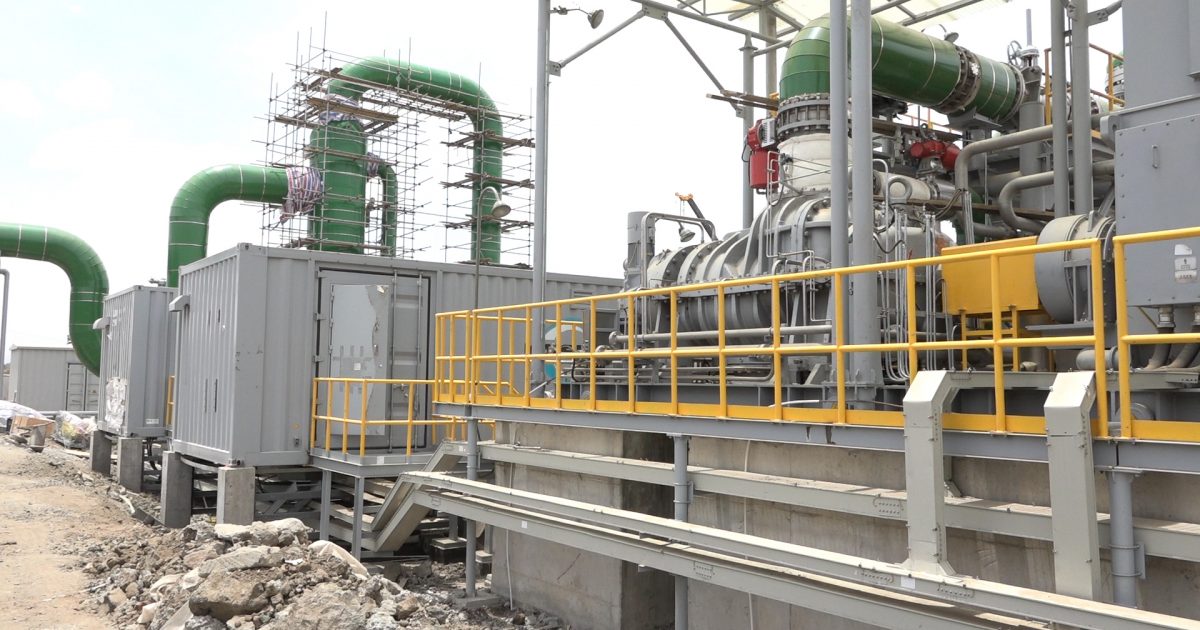Three power firms identified to set up power plants at the Menengai geothermal wells are expected to kick off operations as construction works near completion.
After drilling geothermal wells and building the steam gathering systems at the Menengai Crater fields in 2013, the Geothermal Development Company (GDC) competitively selected three firms that would set up power plants in a Public Private Partnership.
The three Independent Power Producers (IPPs) Sosian Menengai Geothermal Power, Quantum Power East Africa and Orpower were expected to build at the crater’s floor power plants with a combined generating capacity of 105 Mega Watts or 35 Mega Watts each.
For a long time, there was no activity as the companies’ experienced difficulties in raising capital to construct the power plants.
The Menengai Project is the second large-scale geothermal field being developed in Kenya after the Olkaria units in Naivasha Sub-County whose exploration is carried out by the Kenya Electricity Generating Company (KenGen).
Nonetheless after a decade long wait the much-talked-about Menengai Project in Nakuru County, is finally starting to take shape as construction of Sosian Menengai Geothermal Power Plant is 90 percent complete while Quantum Power East Africa has secured Sh8.89 billion funding ($72 million) to develop its 35-megawatt (MW) power plant.
Investors at Nakuru’s Burma Light Industries are upbeat that once the IPPs are commissioned the cost of electricity will fall dramatically, which will translate into reduced power bills and cost of living. For business it will mean lower cost of production and therefore affordable products.
Burma Light Industries is the result of over 200 ambitious men’s quest to produce goods that compete with imported ones, create more jobs, and raise Kenya’s share in the regional market.
At Burma, there is a factory for almost everything. Everything is possible here, from egg incubators to hinges, to posho mills, solar water heating systems, to ovens, to bakery equipment, utensils, carpentry items, jikos, flush doors and vehicle spare parts.
Today, more than 100 factories share space in the small zone set aside by the County government, and the numbers keep growing.
Mr Fredrick Gathuita, a Director at Shuk Technologies, says availability of affordable, reliable power will bolster the development of light manufacturing which he notes is an important part of Kenya’s plan for industrialization as articulated in the Kenya Industrial Transformation Programme (KITP).
“Completion of these three IPPs (Sosian Menengai Geothermal Power, Quantum Power East Africa and Orpower) will significantly address power costs in Kenya. This will boost the competitiveness of Kenya’s economy,” he quipped.
Mr Gathuita noted that lower electricity tariffs will translate into lower production costs and affirms that this is also likely to knock some imported products from Kenya’s shelves in favour of locally manufactured ones while creating more jobs for the youth.
The industrialist, who fabricates aluminium water boilers, solar water boilers and bakery equipment observed that light manufacturing is labour intensive and this feature makes it attractive for Kenya as an entry point into industrialization as it has the ability to absorb large pools of labour.
“While this is attractive, am convinced that it can create considerable pressure to rapidly skill up a relatively low-skilled labour pool,” Mr Gathuita added.
The industrialist believes that the solution to the Buy Kenyan build Kenya drive will be greatly come from light industries and if only cost of production comes down and quality of manufactured goods is improved by embracing technology.
Sosian Menengai Geothermal Power was initially scheduled to start operations by September last year after receiving Sh6.5 billion funding from the China-based Zhejiang Kaishan Compressor to construct a geothermal power plant. The two parties further entered into a 14-year Sh1.8 billion operations and maintenance of systems agreement.
The IPP will now pay GDC Sh1.7 billion per year for the next 25 years before eventually handing over the plant to the government.
Menengai phase one is part of a 5,000-Megawatt project by the government to produce affordable, reliable and green energy.
The State Corporation has drilled steam wells with an output of 165 Mega Watts. This steam is more than enough for the first 105MW of electricity expected to be generated by the three IPPs.
GDC has already constructed the steam gathering system while Kenya Electricity Transmission Company (Ketraco) has set up a 132-kilovolt (kV) substation that will transmit electricity from the three power plants.
Under the arrangement, also known as Menengai Model, GDC was to take care of upfront risks and then invite private sector players to construct, own and operate the plants for 25 years.
Paul Muhende, a civil engineer and a planning superintendent overseeing construction of Sosian Menengai Geothermal Power says the first and second unit of the plant feature screw expanders, while the third and fourth ones are equipped with screw turbines to optimize utilization of steam from GDC wells in generating power
Engineer Muhende explains that dry steam from GDC wells will be channelled into the screw turbines to generate electricity while wet steam which is a by-product of the initial run, will be directed into the screw expanders where, as it is transformed into dry steam yet again, it will move rotors that are coupled with generators to produce power.
He adds, “This type of engineering model makes our power plant a full system that uses the overall potential of the whole power of steam before reinjecting it into the system. In the model, dry steam is immediately reinjected into system once it runs turbines.”
According to 25-year-old Chrisantus Shireka who manufactures solar power equipment at Burma Light Industries, energy consumers have been paying for expensive power from diesel- and thermal-powered generating plants and adds that cheaper electricity from geothermal sources is welcome news.
“Independent power producers (IPPs), introduced in 2000 in an emergency plan to sustain electricity supply during droughts, have become the biggest beneficiary of a business model that compensates them fully for the fuel they use in operations,” he observes.
He notes that since the cost of manufacturing goods is directly passed to consumers, they can expect prices of products at the light industries to go down once the IPPs at Menengai Crater are fully operational.
Mr Shireka a Bachelor of Science in Mathematics graduate from the University of Nairobi petitions the government to expand the incentive structure for manufacturers to expand their night shift production, when there’s plenty of idle power.
He suggests manufacturers take up more power at night at half the cost of daytime rate to improve on their bottom line.
According to Kenya Power the peak demand from industry and households is 1,770 MW but, after 9 pm, the demand halves as most of the country goes to sleep.
“Improving infrastructure and security in shopping areas and residential neighbourhoods would encourage light industries and micro and small enterprises to stay up late and consume more low-cost power,” adds Mr Shireka.
Toyota Tsusho Corporation (TTC) has been picked by a London-based power firm Globeleq as the general contractor, who will design the infrastructure for the Sh8.89 billion Quantum Power East Africa plant as well as procure the necessary material and equipment.
Technically known as the engineering, procurement, and construction (EPC) contractor, the Japanese conglomerate is expected to commence work during the first quarter of 2023.
Globeleq Chief Executive Officer Mr Mike Scholey said his firm and the Nagoya-based company, a unit of the Toyota Motor Corporation had also executed a long-term service agreement (LTSA) which will take effect once the power plant reaches commercial operations in 2025.
In 2021, Globeleq acquired a majority stake in Quantum Power East Africa. British Nation Investment (BII – formerly CDC) holds 70 percent of shares in Globeleq while the rest are owned by Norwegian DFI Norfund.
Mr Dennis Mwangi whose firm manufactures egg incubators at Burma Light Industries says that the projects will bolster Kenya’s efforts towards a 100 percent transition to clean energy in a bid to provide cheap electricity besides protecting the environment from the pollution of the thermal power plants.
“When talking about sources of employment in Kenya, the Jua Kali sector has to feature on the list. It provides employment to up to 83 percent of the working population and lower power costs will even make it more sustainable,” he opines.
Mr Mwangi says completion of the IPPs will address one of the biggest challenges the sector faces since it will be a panacea for the problems of poverty and unemployment
For example, Kenya Power disclosed that the uptake of electricity from thermal energy plants jumped from 876-gigawatt hours (GWh) to 1,539 GWh in the 2021/22 financial year.
According to GDC Managing Director and CEO Engineer Jared Othieno, once the three IPPs are fully operational electricity generated from the multibillion-shilling Menengai Geothermal Project will cost at least Sh7 per kilowatt less than diesel or hydro power.
“When electricity is finally generated at Menengai, our country will save more than Sh13 billion as fuel levy annually and ultimately lower the cost of power bills,” said the Regional Manager, adding that Kenya would save some Sh45 billion spent to buy diesel.”
The CEO noted that the Menengai GDC plant had the capacity to produce enough electricity to serve almost 500,000 homesteads and 300,000 businesses.
GDC began drilling at Menengai site in February 2011 and has so far sunk over 43 wells, 24 of which have been tested giving 165 MW. The rest of the wells are still undergoing tests.
GDC plans to pump an extra 1065mw into the national grid in the next ten years which will be generated from Menengai (465 Mega Watts), Baringo-Silale (300 MegaWatts) and 300 Megawatts from South Rift region as the government seeks more geothermal energy.
By Jane Ngugi and Dennis Rasto



